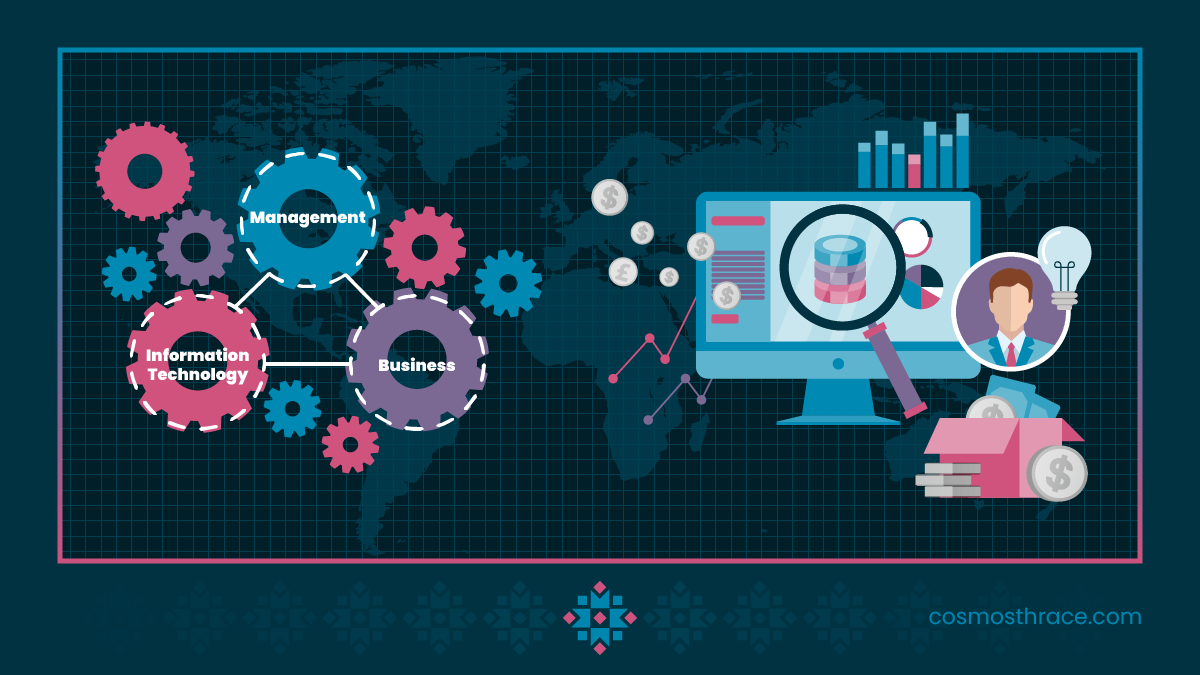Every single business needs BI reporting to prepare, analyze, and present business metrics. To begin with, there are two types of Business intelligence reporting. Managed reporting is the process of preparing data for non-technical users by a technical professional, such as an IT associate or data analyst. A BI platform’s ad-hoc reporting feature enables non-technical users to build new reports from start to end or change old ones without contacting IT. Users of reports can slice and dice tables to find links between variables and see data patterns over time. Reports may be produced in a variety of forms, including tables, spreadsheets, and PDFs. Charts, graphs, and histograms are examples of visualizations used in BI reporting. BI reports may now be automated and run at a predetermined time thanks to modern technologies.
How does all of this work in a synchronized system of processes?
Data is pulled and read from on-site and cloud-based data sources of a company via BI reporting tools. The reporting tool may be used to produce analyses by selecting metrics like sales, revenue, inventory counts, etc., and applying dimensions like date, purchase order, or customer information. Drag-and-drop feature allows users to select dimensions and metrics while creating reports. Depending on the selected data, a team may produce tables, histograms, or pie charts, as well as predict models. These charts may be used to build dashboards, and they can be set to update periodically or almost instantly. Tableau provides demonstrations and training films to help users better understand the potential and capabilities of BI reporting.
Furthermore, to enhance decision-making, BI reporting aims to offer data insights.
However, not just analysts and IT developers should have the authority to slice data to find patterns and insights. Reports that are arranged and tailored in the forms that the company’s decision-makers prefer are needed. They must be able to read the report, comprehend the information, make decisions, and make wise judgments. Eliminating data silos and establishing a single source of truth are two further objectives of BI reporting. There are no longer different versions of the truth when teams use the same datasets and analytic platform. Decision-making processes can reach a better view of the problem and change data in one location; thus, data analysis is faster and more precise. However, without a BI reporting tool, these objectives cannot be achieved.
Therefore, establishing a BI reporting strategy in your business has several advantages.
Using self-service BI technologies, non-technical users may now make their own reports. Employees may find it simpler to use data and comprehend key business indicators with the help of BI tools. Teams can utilize reporting data to share the data with others and improve their decision-making. Data from business intelligence can help decision-makers. By combining data from several departments and enabling users to engage with that data, BI reports can assist businesses in seeing the wider picture. Because big data reporting solutions are intended to reduce the amount of time spent processing data for reporting, all of this can be finished faster and more effectively. BI solutions may also automatically publish reports on a timetable that is tailored to security permissions.
In addition, Online reporting and business intelligence are intertwined. No matter what business or area you work in, if you collect data, you must evaluate and display it well. As a result, you may make better strategic decisions for your company and get knowledge that would not have otherwise been known.
Nevertheless, BI platforms and their functions vary from one another, so it is best practice to evaluate BI tools in advance according to your business’s needs.
Although there are numerous BI software platforms out there, not every tool will work for your company. Select a platform that provides these 4 key factors:
- Programmable Dashboards – Well-structured platforms can enable all users to quickly develop insights that are driven by visuals.
- Simple User-friendly Interface – Non-analysts should be able to quickly query and obtain the desired results.
- Plug-and-play Capability – The ideal platform works with your security and governance environment without the need for extra infrastructure, fitting inside your current data architecture.
- Scalability – The platform is adaptable enough to grow along with your company as it expands.
To conclude, Business BI reporting possesses the objective of enabling end users to view data in a way they can evaluate it and make it intelligible through analysis. When the purpose of business intelligence is to see, understand, and act upon data, then efficient reporting aims come first. Data is the subject of reporting; however, analysis is what transforms the data into knowledge.
Contact us, if you want to enable effective BI reporting in your company!


